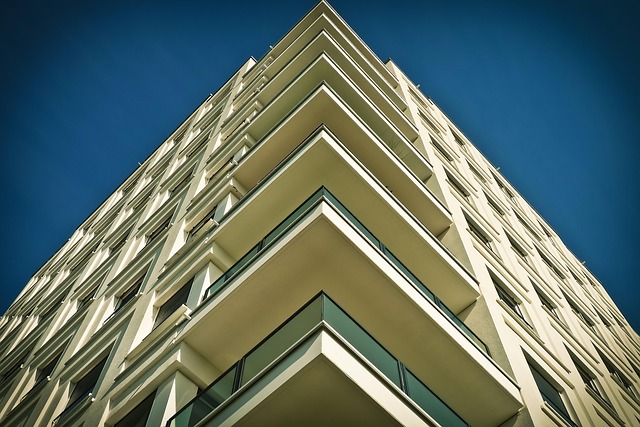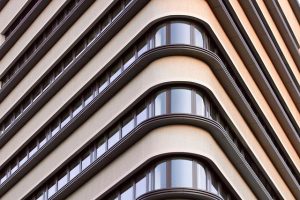Property and Casualty Insurance for Commercial Buildings is a dual-coverage solution protecting businesses from property damage (fire, theft, weather) and liability claims (accidents, injuries). Essential for risk management in commercial spaces with potential hazards like crowded areas, hazardous materials, or valuable assets. Key components include property insurance for physical damage/loss and casualty insurance for liability. Adequate coverage prevents financial strain, operational closures, and instability by providing funds for repairs, reconstruction, and legal liabilities. Risk assessment tailored to individual business needs ensures optimal coverage, while understanding exclusions helps inform policy decisions. Selecting the right policy involves assessing specific needs, comparing providers, and choosing customized solutions for cost-effective protection of commercial buildings. Real-world examples highlight the critical role comprehensive coverage plays in swift recovery from unforeseen events like fires or water damage.
In today’s unpredictable business landscape, safeguarding your commercial buildings against unforeseen events is paramount. Understanding Property and Casualty Insurance isn’t just about protecting assets; it’s a strategic move to safeguard your investment and ensure continuity. This comprehensive guide delves into the intricacies of Commercial Property Insurance, its diverse coverage types, and why it’s an indispensable tool for businesses. From risk assessment to policy selection, explore real-world case studies that highlight the significance of this vital protection.
Understanding Property and Casualty Insurance

Property and Casualty Insurance, a dual-pronged coverage, is a cornerstone of risk management for commercial buildings. It’s designed to safeguard against two distinct yet interconnected risks: property damage and liability claims. For businesses, this means protecting their physical assets—from structures like office blocks and warehouses to their contents—against perils such as fire, theft, or severe weather.
Casualty insurance, the liability aspect, shields businesses from financial loss arising from accidents or injuries occurring on their premises. This could include legal fees, medical expenses, and damages awarded in lawsuits. For commercial buildings, this coverage is crucial given the potential for crowded spaces, hazardous materials, or high-value assets, making it a vital component of any comprehensive risk management strategy.
What is Commercial Property Insurance?

Commercial Property Insurance is a type of coverage designed to protect businesses from financial losses related to their physical structures and assets. This includes buildings, equipment, inventory, and other valuable resources essential for day-to-day operations. In the event of damage or destruction caused by perils such as fire, theft, vandalism, natural disasters, or accidents, this insurance provides financial compensation to help businesses recover and continue their activities.
It is a comprehensive solution for business owners seeking protection against a wide range of risks specific to commercial properties. This type of insurance policy offers peace of mind by ensuring that businesses can replace or repair damaged property, cover business interruption costs, and even provide liability coverage if claims arise from accidents on the premises. Thus, Property and Casualty Insurance for Commercial Buildings is an indispensable tool for risk management in the business world.
Types of Coverage for Business Properties

When it comes to property and casualty insurance for commercial buildings, businesses have several coverage options tailored to protect their investments. The two primary types of coverage include:
1. Property Insurance: This protects against physical damage or loss to the building itself, as well as any structures on the property. It covers events like fires, storms, vandalism, and even natural disasters. Property insurance can also extend to personal belongings and inventory inside the building, ensuring that businesses can continue operations after a covered event.
2. Casualty Insurance: This component of commercial property insurance provides liability protection, shielding businesses from financial loss due to accidents or injuries occurring on their premises. It covers legal costs, medical expenses, and settlements resulting from claims against the business. Casualty insurance is crucial for safeguarding businesses from lawsuits and potential financial ruin.
Why is Casualty Insurance Necessary?

Casualty insurance is an essential component of risk management for any business owner, especially those responsible for commercial buildings. This type of insurance protects against financial loss due to unforeseen events that can damage or destroy properties. Whether it’s a fire, natural disaster, theft, or vandalism, property and casualty insurance for commercial buildings provides financial recourse to cover repairs or reconstruction costs, as well as potential legal liabilities.
Without adequate coverage, businesses face the risk of significant financial strain, potentially leading to operational closures and long-term instability. Casualty insurance offers peace of mind by ensuring that unexpected events don’t translate into insurmountable financial burdens. It allows business owners to focus on growth and stability, knowing their investment in commercial buildings is shielded from unforeseen perils.
Risk Assessment for Commercial Buildings

Risk assessment is a critical component of property and casualty insurance for commercial buildings. It involves meticulously evaluating potential hazards and threats that could impact the structure, its contents, and the overall business operations. This process helps insurers and policyholders alike to understand vulnerabilities and take proactive measures to mitigate risks. By analyzing factors such as location, construction materials, age of the building, and historical data on natural disasters or crime rates, a comprehensive risk assessment provides an accurate picture of potential losses.
A thorough assessment ensures that commercial buildings are adequately insured against various perils like fire, storms, theft, vandalism, and civil unrest. It also enables businesses to identify areas where security measures can be enhanced, leading to better loss prevention strategies. Regular risk assessments are essential in the dynamic world of property and casualty insurance for commercial properties, as they allow for policy adjustments, new coverage options, and a more tailored approach to safeguarding business assets.
Common Exclusions in Property Casualty Policies

When considering Property and Casualty Insurance for Commercial Buildings, it’s crucial to be aware of common exclusions that may limit coverage. These exclusions vary across policies but often include perils like war, nuclear incidents, and earthquakes, which are typically not covered by standard policies. Understanding these gaps in coverage is essential as they represent potential financial vulnerabilities for business owners.
Other frequent exclusions relate to certain types of damage, such as those caused by wear and tear, normal maintenance, or intentional acts. Floods, though increasingly common, often require separate insurance policies due to their exclusion in standard commercial casualty policies. Being informed about these exclusions enables savvy business owners to make informed decisions when selecting the right coverage for their properties.
How to Choose the Right Policy for Your Business

Selecting the ideal property and casualty insurance policy is a pivotal step in safeguarding your business against unforeseen risks. The first step is to assess your specific needs, considering factors such as the value of your commercial building, its location, and potential hazards unique to the area. For instance, if your business operates in a region prone to natural disasters like floods or earthquakes, ensuring comprehensive coverage for these events is essential.
Next, compare different insurance providers and their offerings. Review policy details, including deductibles, coverage limits, and exclusions. It’s crucial to understand what’s included and excluded from each plan. Look for a provider that offers customized solutions tailored to your business size and industry. This personalized approach ensures you have the right balance of protection and cost-effectiveness for your commercial buildings.
Case Studies: Real-World Examples of Coverage

In the realm of property and casualty insurance for commercial buildings, real-world examples serve as compelling case studies that highlight the importance of comprehensive coverage. Consider a small business, “Café Delight,” located in a bustling metropolis. A fire originating from faulty kitchen equipment rapidly spread throughout the establishment, causing extensive damage to both structure and contents. Thankfully, Café Delight had invested in a robust property and casualty insurance policy that covered not just the physical building but also the loss of inventory, equipment, and business interruption. This coverage enabled them to rebuild swiftly, minimize financial strain, and reopen their doors within weeks, ensuring continuity for their loyal customer base.
Another example involves “Tech Innovations,” a startup focused on cutting-edge technology. Their office space, housed in an older building, suffered severe water damage due to a burst pipe during the winter months. The resulting flood not only damaged IT equipment and furniture but also disrupted their operations significantly. Tech Innovations’ property and casualty insurance policy stepped in, covering the cost of repairs, replacement of equipment, and even providing financial support for alternative workspace during the renovation period. This coverage proved invaluable, allowing the startup to maintain productivity and meet client deadlines without the usual disruptions that follow such unforeseen events.
